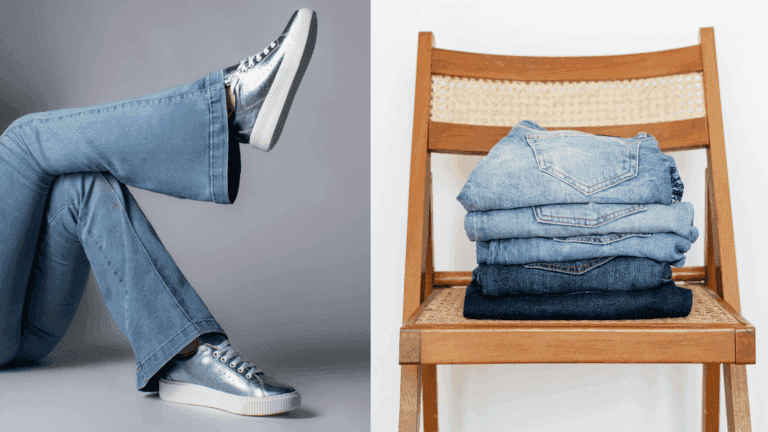In this blog post I am reflecting on three iconic fashion labels —Ulla Johnson, Diane Von Furstenberg, and Tory Burch. I’ve long admired their creativity and commitment to women’s empowerment, but I can no longer support them. As I become a more conscious consumer, I expect brands to evolve as well. Until they take real steps towards sustainability and ethical responsibility, I will not be investing in their new designs.
Not a reader? No problem! I’ll be posting a fun and interactive YouTube video on this topic soon—complete with some fashion modeling on the side. Sign up to get a notification when it’s live!
American contemporary designer brands like Ulla Johnson, Diane von Furstenberg, and Tory Burch occupy a space between mass-market fashion and luxury. Often labeled as contemporary luxury or accessible designer, these brands offer high-quality craftsmanship, boast premium materials, and a strong brand identity—yet they remain rooted in mass production. They are the quintessential representation of the American fashion system, which pioneered the concept of mass-produced ready-to-wear, a model that has since grown far beyond any reasonable proportion.
While they position themselves as an investment in quality, their production practices often mirror those of fast fashion—relying on outsourced labor, synthetic materials, and large-scale manufacturing. Without meaningful strides in sustainability, circular design, or ethical production these brands risk being just as environmentally harmful as fast fashion, despite their higher price points and longer consumer lifespan.
Table of Contents
From Paris to New York: The Birth of Mass Fashion and Its Modern Dilemma
American fashion has long been defined by its embrace of mass production and ready-to-wear clothing, a concept that dates back to the early 20th century. One of the first American Designers (before a designer became a real profession in the US), Elizabeth Hawes, criticized the industry’s obsession with fleeting trends and mass consumption in her 1938 book Fashion Is Spinach.
She foresaw many of the sustainability issues we grapple with today, questioning the very foundation of fashion as a system built on continuous production and waste. While mass production made fashion more accessible, it also laid the groundwork for the environmental and ethical challenges that persist today.
The 1973 Battle of Versailles Fashion Show was a turning point that solidified American fashion’s global influence. Designers like Oscar de la Renta, Halston, Bill Blass, and Anne Klein went up against French couture houses, proving that American ready-to-wear could rival European luxury.
While this moment celebrated American innovation and accessibility, it also reinforced the mass-market approach. Today, many contemporary designer brands continue to position themselves as more exclusive alternatives to fast fashion, but without serious sustainability efforts, they remain part of the same flawed system.
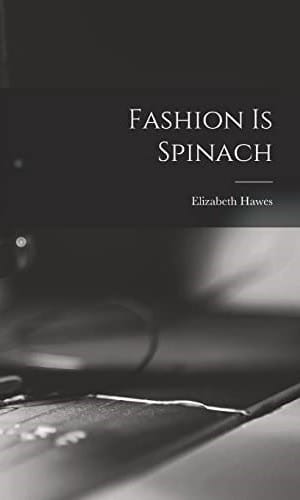
“Fashion is Spinach” is a metaphor criticizing the way fashion is dictated to consumers rather than being a form of genuine self-expression. Fashion, as an industry, forces arbitrary trends onto people, much like being told to eat spinach whether you like it or not. In contrasst true style, is personal, functional, and meaningful rather than driven by seasonal trends and mass production.
Hawes believed that people should have the freedom to dress according to their own tastes and needs, rather than being manipulated by designers and marketers who profit from constant change. She was an early advocate for sustainability in fashion, questioning the wasteful cycle of production and obsolescence that still defines the industry today. May I just point out once again that this was 1938.
My Journey: From Fashion Enthusiast to Informed Critic

I love fashion and for a long time I have been curating a closet full of pieces from brands that are synonymous with style, quality, and timeless elegance. But as I’ve become more conscious of the environmental and human impact behind the industry, my perspective has shifted.
I no longer settle for a catchy design, a bold print, or a recognizable name. I need to know that the women behind these brands stand with me in advocating for a more mindful approach to fashion production and consumption. I call on them to use their power, voices, and resources to make a positive impact on the greater good.
While the brands I so loved, Ulla Johnson, Diane Von Furstenberg, and Tory Burch, are known for their elegance, quality craftsmanship, and empowering messages, they fall short in areas that matter deeply to me as a devoted follower. They neglect to educate consumers about their business practices and share few details of their products’ journeys—information I believe is essential before making a purchase. These brands show little consideration for the fibers they use, and they fail to innovate or invest adequately in environmental sustainability.
Instead of focusing on improving their production and sourcing practices, they continue expanding into more product categories and investing heavily in marketing campaigns. Let’s explore what they’re doing well, where they can improve, and how their lack of transparency and meaningful action affects both the planet and their consumers.
Ulla Johnson: Artisanal Aesthetic, But Lacking Transparency – Loyal Customers Want More.
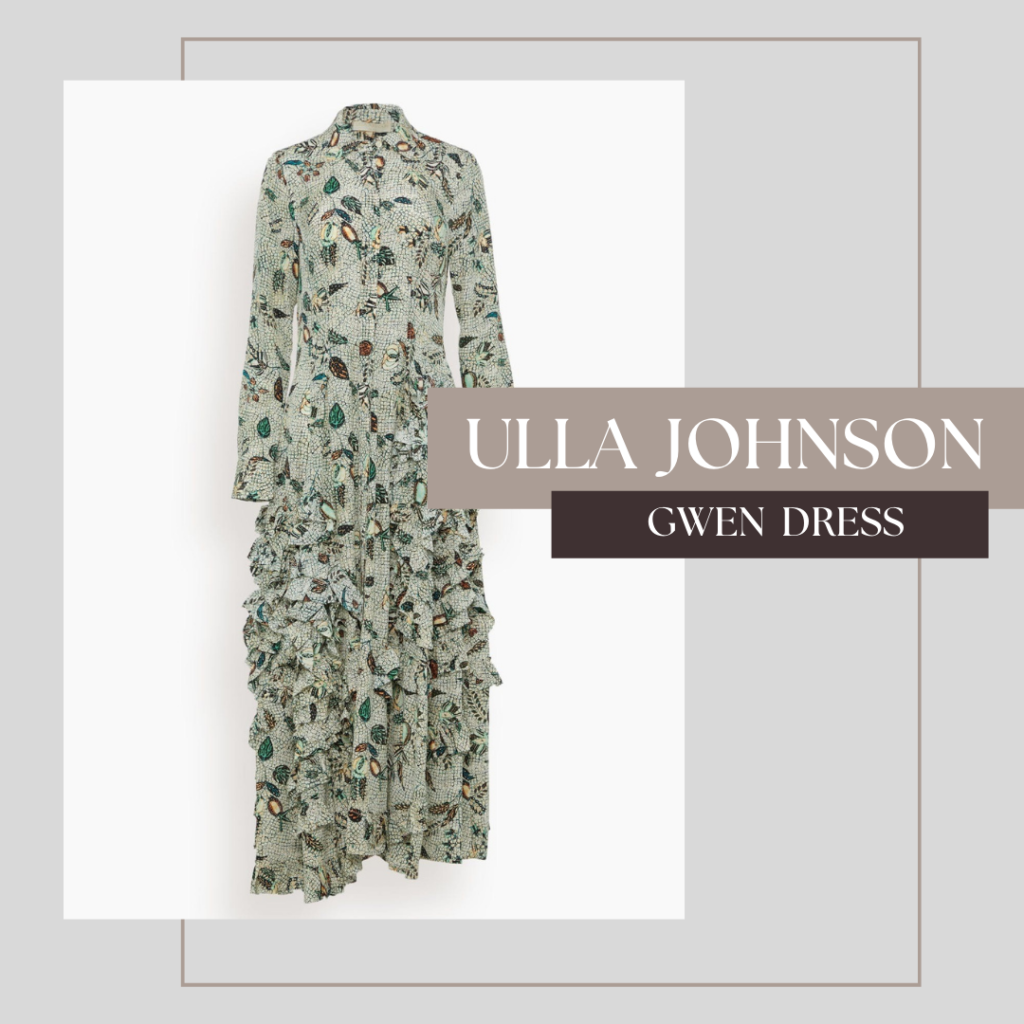
Ulla Johnson has long been my go-to for boho-inspired designs, celebrated for their intricate embroidery, feminine details, eclectic fabric mixes, and artisanal jewelry. To me, the brand embodies femininity, fluidity, and a whimsical, colorful charm.
Though I typically dress conservatively and consider myself a minimalist in my daily wear, I’ve always felt the need to incorporate something bright, flowery and frilly to create balance. What initially drew me in was the artistry and craftsmanship behind each piece. However, as I became more conscious of the environmental and social impact of my clothing choices, I began to question where these garments were made—and by whom.
While the brand highlights partnerships with artisans in Kenya, India, and Peru, there’s a lack of transparency about these collaborations. Their 2020 partnership with a Nairobi glassblowing workshop and the 2023 collection featuring hand-crocheted garments from India are compelling, but the brand offers little documentation or storytelling of its impact. As a consumer, I want to understand how my purchases support these communities. Ulla Johnson’s romantic brand narrative is captivating, but without concrete details on Fair Trade partnerships and artisan wages, it feels more like a marketing tactic than a genuine commitment.
Meanwhile, communities in Kenya are drowning in massive piles of unwanted clothing from the Global North, unable to cope with the sheer volume. They struggle to find value in discarded synthetic, poor-quality garments. If a brand truly wanted to make a difference, investing in solutions and raising awareness about these issues could be a powerful and inspiring act of kindness.
Fabrics Printed in Italy, Garments Made in China—What’s the Story?
While I love the beautiful silk designs and the vibrant prints often created in Italy, I’ve noticed a lack of transparency regarding where the garments are made. My silk dresses list China as the country of manufacturing, yet this information is never disclosed on their website. When I asked customer service for clarification, they didn’t have the answers and assured me someone would get back to me. Weeks later, I’m still waiting. This lack of communication is frustrating, especially for high-priced items.
I’m an avid sewist, so I know exactly what to look for in a well-made garment. As much as I appreciate the beautiful craftsmanship, I am disappointed to see synthetics and blends in most of Ulla Johnson’s more affordable pieces. Materials like polyester, rayon, and problematic blends like cotton and polyamide are hard to recycle and unsustainable, which is a red flag for me as a responsible consumer. Choosing more natural fabrics would make the brand better suited for circularity, ensuring its pieces have a lower environmental impact and a longer, more sustainable lifecycle.
For the price, garments should last longer in your wardrobe. While some Ulla Johnson pieces do, this isn’t truly slow fashion. Many of the pieces lean more towards trendy than timeless, often getting donated or appearing on resale platforms by those constantly seeking something new. I see them in local thrift and charity shops and I sometimes buy them because of interesting fabrics, knowing I can transform them into something new and give them a second life.
Fashion lifts us up and makes us feel like the best versions of ourselves
Ulla Johnson
I want to believe that this woman—my contemporary, a talented creative, and a mother—wants her brand to become a better version of itself, stand alongside other female designers, and help us care for the world we share.
I sincerely hope the brand takes a step toward greater transparency in its production practices and shows us how they are truly supporting artisans and their communities. Even small, honest steps will be appreciated by consumers like me who care about where our clothes come from. Until then, I’ll continue to shop second-hand.
You can explore Ulla Johnson’s own pre-loved category on her website, though in my experience, you’ll find a wider selection at better prices elsewhere. That said, some pieces from Ulla’s personal collection are available for purchase, with proceeds going to Dress for Success. If you can afford it and trust that the funds will be used as intended, this could be a meaningful investment. Personally, I would rather make a donation directly to the charity.
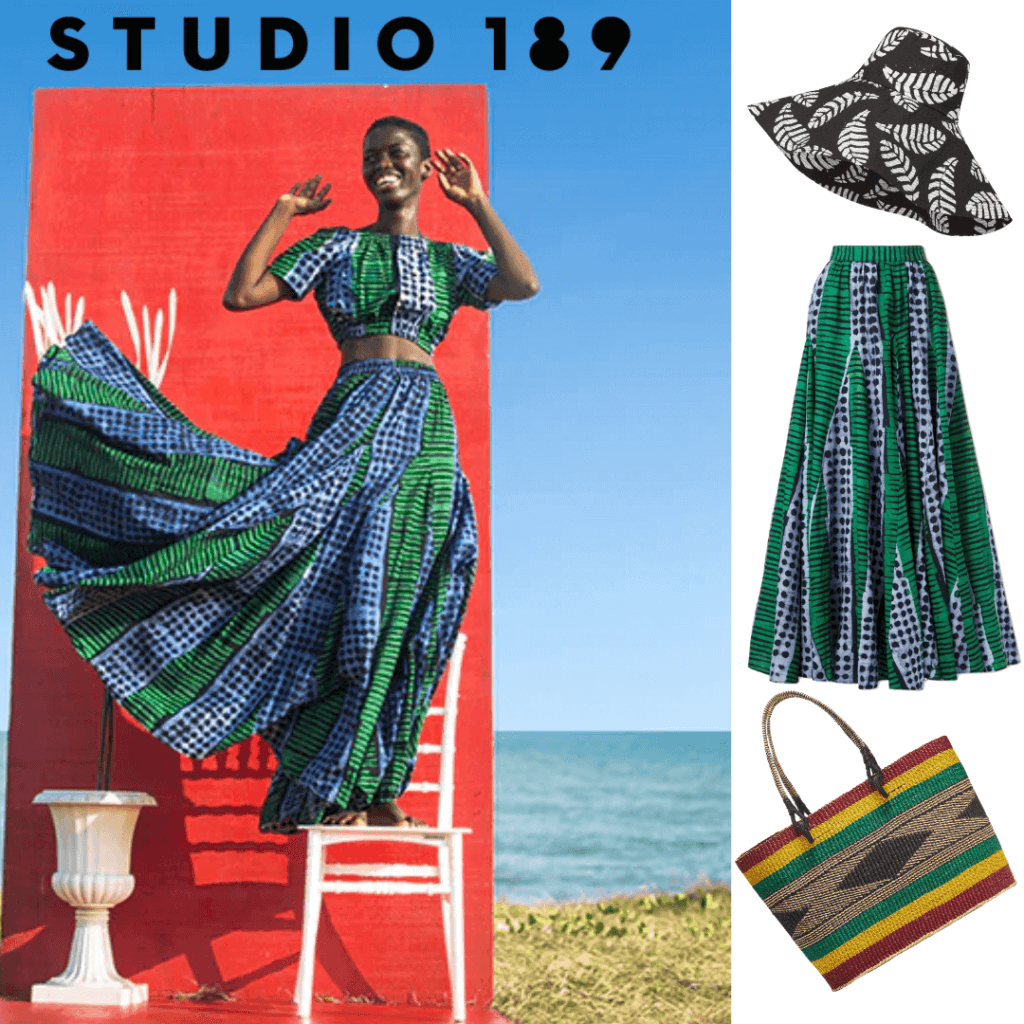
If you’re on the lookout for pieces with a similar aesthetic to UJ, but made by artisans using traditional techniques like batiking and hand-weaving, I highly recommend checking out the gorgeous creations by Studio 189. They embody craftsmanship and sustainable practices while supporting local communities.
For new garments, I now turn to brands that better align with my values. Fortunately, there are plenty, and I’m happy to share my favorites on my website www.larissaoliveri.com.
Diane Von Furstenberg at a Crossroads: Will the Iconic Brand Embrace a More Ethical Future?

The iconic wrap dress always makes me feel chic and feminine, and a stunning wide-leg batwing sleeve jumpsuit, which has been in my closet for a decade, never fails to earn compliments whenever I wear it.
Diane Von Furstenberg (DVF) has been synonymous with effortless luxury and glamour for decades. As a loyal customer for over 20 years, I’ve curated a collection of DVF dresses and accessories that have been my staples for special occasions, business events, and beyond.
As a devoted customer, I’ve watched a slow-motion trainwreck unfold over the past decade. DVF, once a powerhouse in the fashion world, gradually became a shadow of its former self as poor management and a series of missteps eroded its identity. The decision to license the brand to a Chinese management and distribution company may have been necessary, but it further diluted its appeal. The shift from quality craftsmanship to a more mass-market approach left longtime fans, including myself, disillusioned. However, I remain hopeful for the future. Diane Von Furstenberg recently regained control of her brand, and I’m eager to see the new vision she has in store.
The 2023 collaboration with Target was a turning point for me. While making a designer’s iconic pieces more accessible aligns with principles of diversity and inclusion, the execution felt like yet another misstep that further eroded the brand’s perceived quality. Diane Von Furstenberg has long represented luxury and sophistication, yet seeing her signature wrap dresses sold for $50 alongside Target’s mass-market offerings felt like a compromise of the brand’s identity.
Even worse, it fueled the production of cheaply made synthetic clothing, effectively pushing DVF into the realm of fast fashion—a far cry from the timeless elegance it once stood for. In the end, it felt less like an effort to make fashion more accessible and more like a short-sighted attempt to cash in on a trend—at the expense of the brand’s legacy.
I can’t help but feel that DVF is at a crossroads, and their latest move—hiring Graziano Di Boni as CEO—reflects that. Di Boni brings an extensive background from Hugo Boss America, Valentino America, Prada America, and Giorgio Armani America. His consulting firm offers a full suite of services a struggling brand might see as essential for revival—restructuring, rebranding, financial services, operations, and IT. Yet, one crucial element is notably absent: sustainability. One can only hope that sustainability will be woven into the new strategy.
Empowering Women: A Legacy Worth Continuing
It’s hard for me to speak negatively about the brand while I admire Diane von Furstenberg as a person and a woman. Female empowerment has been a core value at the heart of her brand since its inception. Throughout her career Diane has supported women with education, mentorship, and career advancement. Her advocacy has earned her many honors, including the Crystal Award from the World Economic Forum and the Lifetime Achievement Award from the CFDA. Diane’s philanthropy continues through initiatives like the DVF Awards, which recognize and grant women who show leadership and courage. She was inducted into the National Women’s Hall of Fame in 2019.
My hope is that her dedication to doing good will extend to how her brand approaches sustainability. Diane has the potential to be a leader in this space once again, but at this moment, she has not yet embraced the full responsibility needed to drive positive change. This is my critique—her brand, while empowering in many ways, has yet to take the bold steps required to address the sustainability challenges the fashion industry faces today.
Unpacking EcoVero™: A Closer Look at the Hype and Reality of Sustainable Fibers
In 2024, the brand partnered with Lenzing, a leader in sustainable fiber production. The collaboration incorporates TENCEL™ Lyocell and LENZING™ ECOVERO™ fibers into its collections. These fibers are derived from sustainably managed wood sources and are produced with at least 50% less carbon emissions and water consumption.
Consumers should note that many of DVF’s designs incorporate EcoVero™ fibers. A frequent blend that I see on the label is Lenzing’s EcoVero™ viscose (87%), 10% nylon, and 3% spandex ponte, or a combination of EcoVero™ viscose and conventional viscose for practical reasons. On its own, EcoVero™ viscose isn’t as durable or stable, meaning garments made from it may not last as long in our closets.
While adding synthetics like nylon and spandex improves the strength and comfort of clothing with added stretch, it undermines the environmental benefits of eco-friendly materials.These added synthetics release toxins and microplastics over time, contributing to lasting environmental harm. Additionally, the production of these synthetic materials involves the extraction and use of non-renewable resources, further diminishing their sustainability.
I always question choices like this, especially when the brand could invest in more sustainable, organic materials and consider the full lifecycle of the garment—from production to its end of life. While EcoVero viscose is eco-friendly and biodegradable on its own, the added synthetics render it nearly impossible to recycle.
While DVF’s story continues to unfold, I’ve chosen not to invest in the brand’s new creations and instead shop vintage—a choice made easy by the abundance of DVF pieces on resale platforms. Recently, I scored the most amazing silk organza olive green tartan print dress, famously worn by Meryl Streep. It needs a little love and mending in a few areas, but with some care, it will soon be restored to its former glory—ready to be worn and cherished for years to come. You can also explore pre-loved items in the vintage RE-WRAP section on the DVF website.
If, however, you’re looking to purchase new, I encourage you to consider brands that are further along in their sustainability journey—those that strike a better balance between financial success and making ethical, long-term investments in a brighter future. You can discover many of these brands across the sustainable fashion, beauty, and home categories on my website, Sustainable Fashion Edit.
Here are a few of my personal favorites:
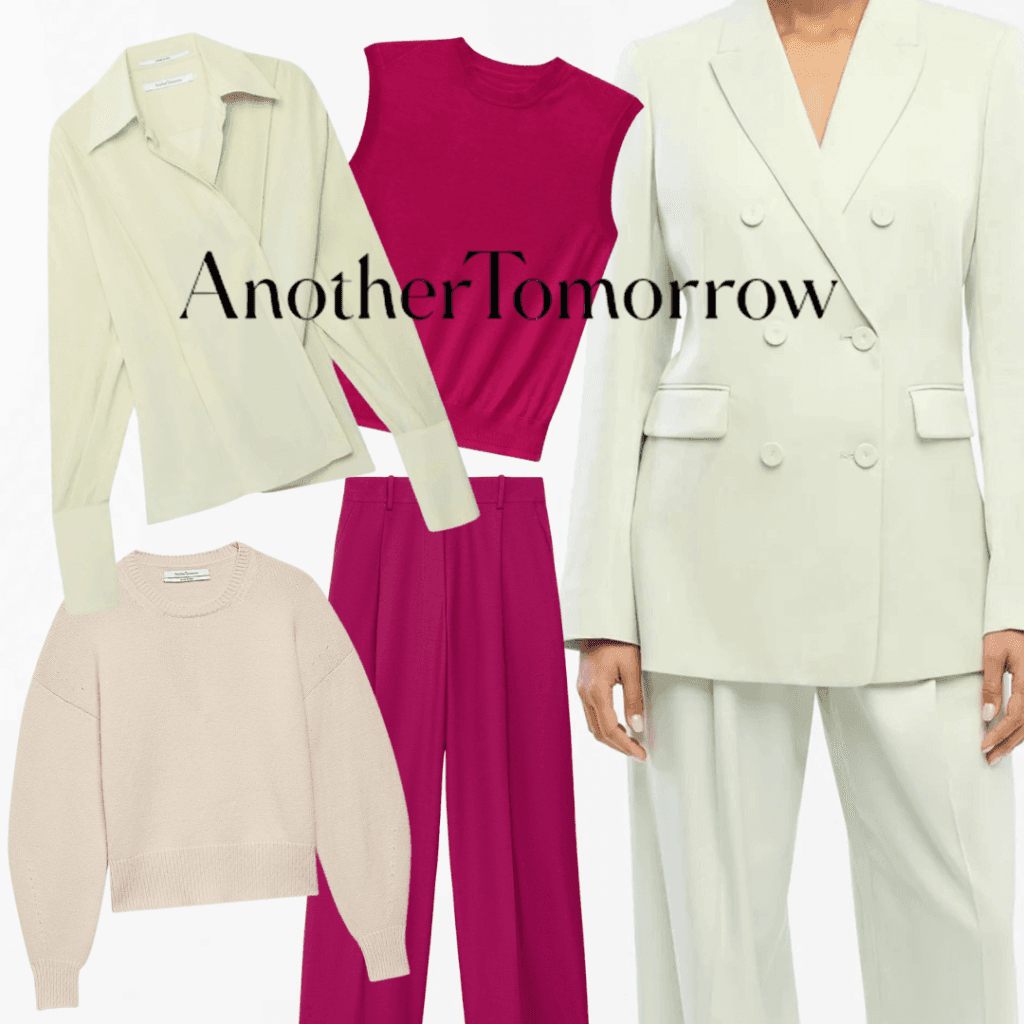

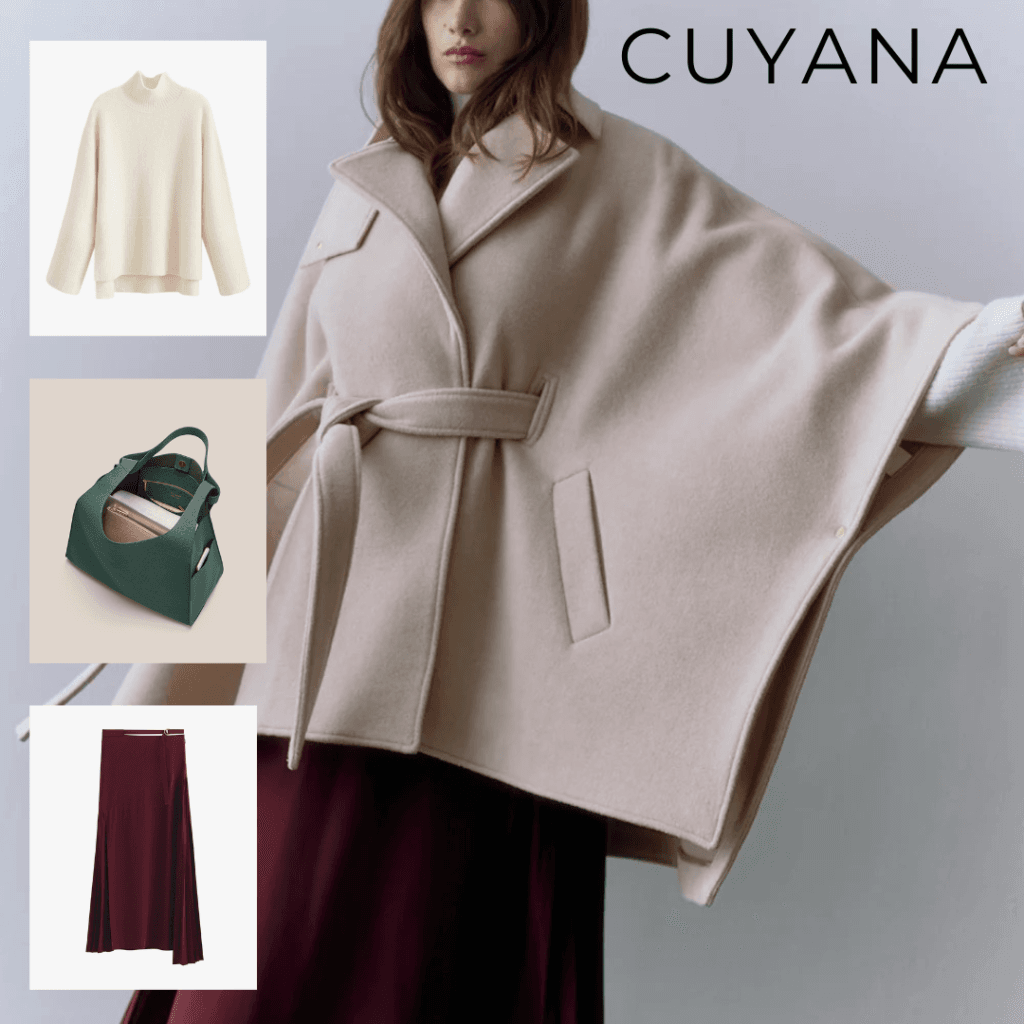
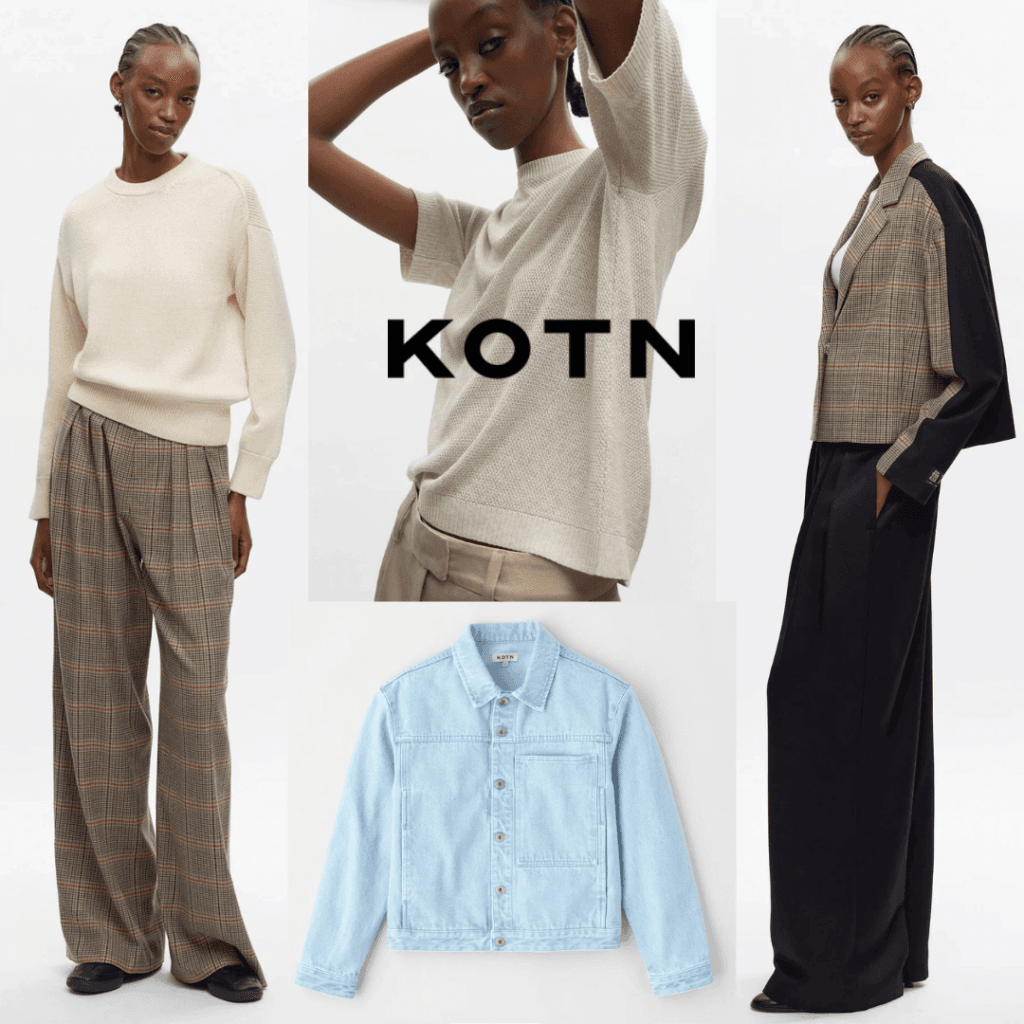
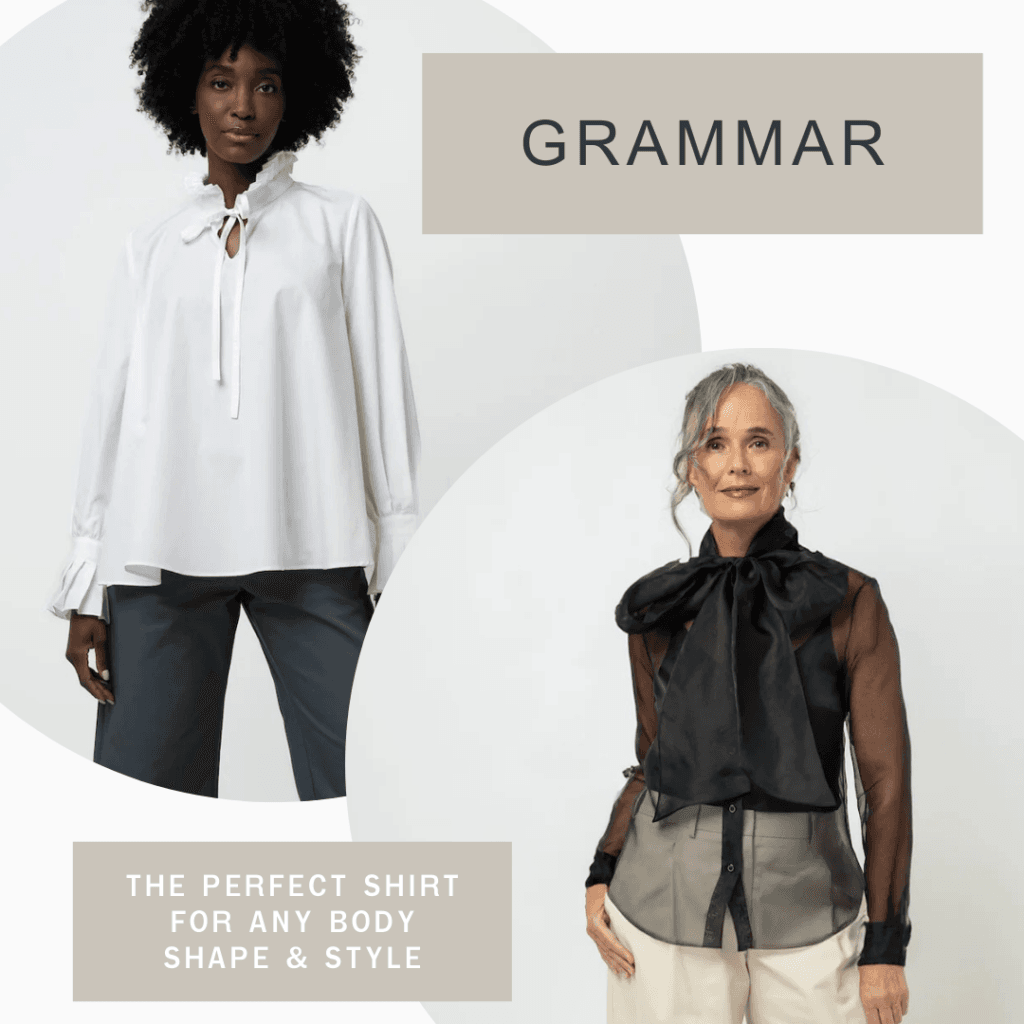
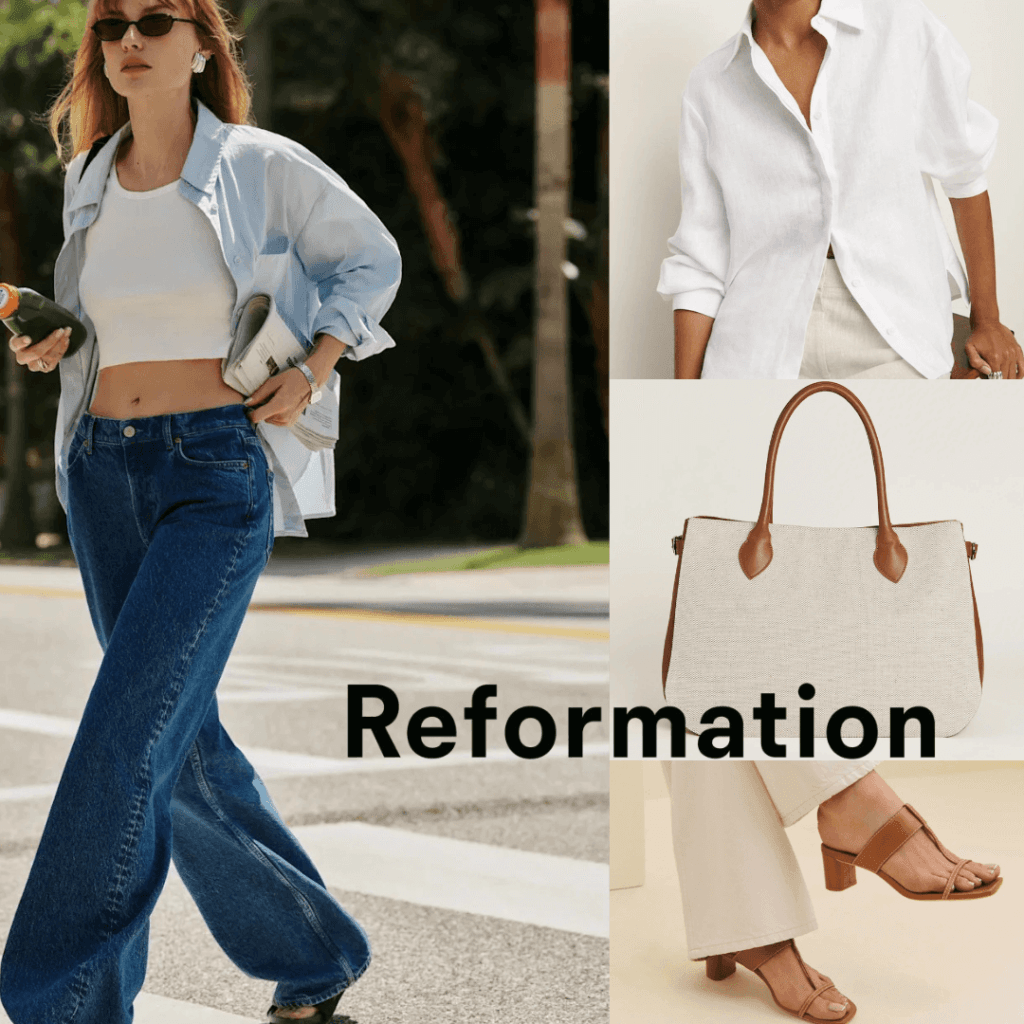
Tory Burch: A Leader in Women’s Empowerment—Can She Lead in Sustainability Too?
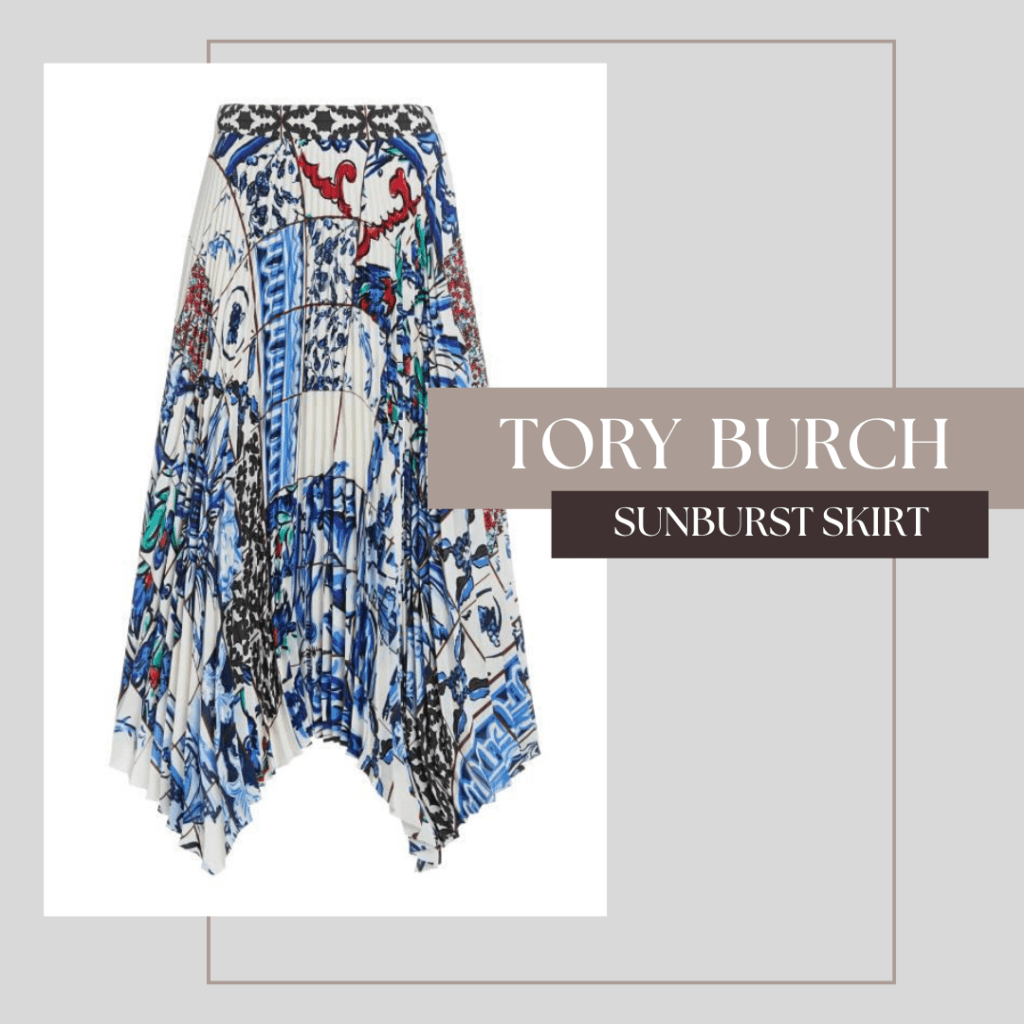
I’ve always been drawn to TB’s classic designs—elegant, well-tailored, and perfectly suited for my executive career wardrobe, with just the right touch of edge.
Tory Burch is a brand that resonates with many fashion enthusiasts. Known for its preppy, chic aesthetic, the brand has successfully expanded into a global fashion powerhouse. I have quite a selection of her clothes in my wardrobe. My only complaint over the years has been the bold logo that she places on many pieces. I’ve never been one to flaunt logos, and I’d happily wear a no-brand shirt or dress if it’s well-made and suits my style. For me, a huge, bold logo on bags, shoes, or sweaters makes the look less refined.
Women Lifting Women: The Driving Force Behind These Brands
What drew me to all three of these brands is the incredible women who stand behind them—beautiful, creative, and powerful women who are committed to empowering others. These women inspire me with their strength and their advocacy for women’s issues. They are my contemporaries, sharing similar experiences, histories, and the unique perspective that comes with living as an American woman.
The Tory Burch Foundation is doing incredible work in empowering women entrepreneurs by providing them with the resources they need to succeed. They offer a variety of funding options, including affordable loans, along with mentorship that helps guide women through the often tricky waters of growing a business. The way the foundation creates an environment where women can connect, learn, and thrive is something I deeply admire – it goes beyond business goals. It is about creating opportunities for women to excel and lift each other up.
When meaningful progress is made in one area, environmental sustainability often takes a back seat—raising important questions. Most of all, why is this so common among brands?
Can Diversity & Inclusion Align with Environmental Sustainability, or Do Profit Goals Stand in the Way?
As a global luxury lifestyle brand, our collections are designed to inspire women and the next generation. As we evolve, we are committed to using innovative, lowerimpact materials and production while preserving our high standards of quality and craftsmanship.
Tory Burch
I’m all for innovative, lower-impact materials, but when I look at the current collections, I see garments made from 100% polyester or conventional viscose—materials that aren’t sustainable. Worse yet, there are blends like 40% cotton, 39% viscose, and 21% polyamide, which are particularly problematic for recycling. The industry is still struggling with technologies that can break down these blends into their components for responsible recycling and reuse. I’m also not a fan of garments like a 100% silk dress fully lined with polyester, or a merino wool cardigan lined with silk. This makes it a dry-clean-only item when you could easily hand-wash the wool yourself.
This is where I feel brands, even with the best intentions, fall short. Efforts are being made, yes, but I don’t see a true commitment to real change. Like any other brand, profit is the primary goal. Where is the real investment in innovation or sustainable alternatives?
Tory Burch has been known for its leather products, and I own a beautiful leather bag and sandals that I’ve had for years and will continue to enjoy. A few years ago, they introduced the Ella Bio collection—a leather alternative bags made from BioFabbrica Bio-Tex™, a material that contains 64% USDA-certified bio-based content. It’s produced in Italy with non-GMO plant protein sourced from North America, and was developed in partnership with Modern Meadow, an American biotechnology company known for sustainable material innovation.
But when I see discrepancies like these—leather alternatives in one hand and conventional materials in the other—it makes me question the brand’s true intentions. How much of the production is really sustainable and innovative? Is there a strategy to phase out polyester and other non-sustainable, conventionally produced fibers? Are they truly designing with circularity in mind, considering how these clothes will be repurposed or disposed of at the end of their life cycle? This is what truly innovative modern day brands are doing. The know-how, technologies, and resources are here for the brands to use.
Is It a Communication Gap, Not a Transparency Issue?
I know Tory Burch is making efforts, and I appreciate that, but where is the real data?Lack of transparency makes me question whether the brand’s beautifully presented, well-marketed Impact Report is more than just a polished narrative. Perhaps the brand simply hasn’t caught up with the growing demand for transparency from today’s consumers. We won’t buy without access to real information. It’s what drives our choices—not just the label, the design, or the promise of empowerment alone.
If the data exists, then perhaps the brand and marketing team need to rethink their approach, understanding that true consumer loyalty is reignited not through polished messaging, but through genuine transparency and accountability.
I recently read a case study on Tory Burch’s 2025 Brand Strategy, where the author highlights “sparkling newness” as central to the brand’s design ethos. But here’s where they’re mistaken—not for much longer. Consumer preferences are evolving, yet brands remain stuck in outdated marketing playbooks. The question is: When will they catch up?
Larissa Oliveri
What conscious women-consumers expect of these three iconic fashion labels.
For any brand, especially well-established ones like Ulla Johnson, Diane von Furstenberg, and Tory Burch, transparency is key to building consumer trust. The fashion industry needs more brands to take bold steps, not just in marketing their commitment to social good, but in proving it through tangible actions that show how their supply chains benefit both people and the planet.
While all three brands have strong philanthropic efforts that empower women, we still need them to apply the same level of focus to environmental sustainability. From using eco-friendly materials to reducing waste and sharing clear, actionable sustainability goals, there’s so much room for growth. It’s not enough to tell consumers that you support artisans in Kenya or empower women entrepreneurs; you need to show us—through photos, videos, and detailed supply chain information—what that looks like in practice.
Until that happens, we, as conscious consumers, will continue to demand more. We want garments that not only express our style but also align with our values. Nothing less will do.
What can you do instead while waiting for your favorite brands to catch up with your new values.
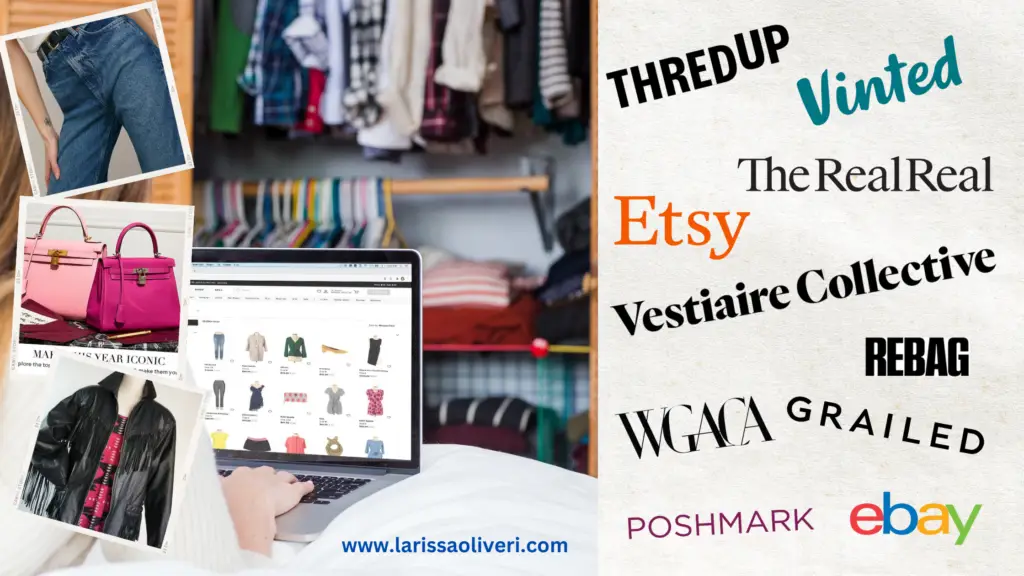
I’m a huge advocate for shopping second-hand and vintage. Not only is it a more sustainable and ethical choice, but it also saves you money and turns shopping into a rewarding experience as you build a wardrobe that reflects your personal style. Buying your favorite brands second-hand—especially from local consignment stores—supports small businesses, strengthens communities, and promotes responsible consumption.
If you need help navigating the vast world of vintage and pre-loved fashion, my blog post on vintage and second-hand resale marketplaces can be a helpful guide.
Alternatively, the truly sustainable and ethical brands doing the hard work and leading the way in these turbulent times deserve our attention and support. Vote with your wallet by choosing those brands. Find inspiration on my blog, social media, and website, where I review brands and share insights on shopping responsibly. Subscribe to get notified when new content is posted!
Leave a comment below and share which brands you wear, and whether you’re reconsidering some of your choices as your values as a conscious consumer evolve.
In this blog, I’m sharing my personal opinions only—I am not affiliated with any of the brands mentioned. I’m simply telling my true story of transformation into a more responsible and mindful consumer of fashion. Thank you for reading.


